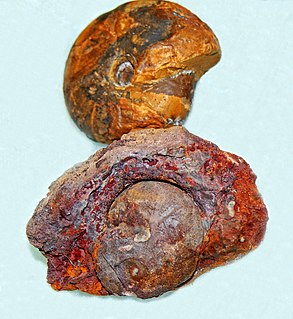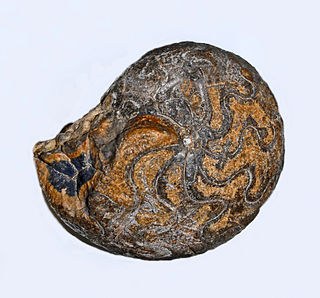Nu metal is a subgenre of alternative metal that combines elements of heavy metal music with elements of other music genres such as hip hop, alternative rock, funk, industrial, and grunge. Nu metal bands have drawn elements and influences from a variety of musical styles, including multiple genres of heavy metal. Nu metal rarely features guitar solos or other displays of technical competence; the genre is heavily syncopated and based on guitar riffs. Many nu metal guitarists use seven-string guitars that are down-tuned to feature a heavier sound. DJs are occasionally featured in nu metal to provide instrumentation such as sampling, turntable scratching and electronic backgrounds. Vocal styles in nu metal include singing, rapping, screaming and growling. Nu metal is one of the key genres of the new wave of American heavy metal.

Korn is an American nu metal band from Bakersfield, California, formed in 1993. The band is notable for pioneering the nu metal genre and bringing it into the mainstream.

Follow the Leader is the third studio album by American nu metal band Korn. The album was released on August 18, 1998, through Immortal/Epic. This was their first album not produced by Ross Robinson. Instead, it was produced by Steve Thompson and Toby Wright.

Jonathan Howsmon Davis, also known as JD, or JDevil, is an American singer, songwriter, and musician. He is best known as the lead vocalist and frontman of nu metal band Korn, who are considered a pioneering act of the nu metal genre. Davis' distinctive personality and Korn's music influenced a generation of musicians and performers who have come after them.

Brian Philip Welch, also known by his stage name Head, is an American musician, singer and songwriter. He is one of the guitarists and founding member of the nu metal band Korn and his solo project Love and Death. Along with fellow Korn guitarist James "Munky" Shaffer, Welch helped develop Korn's distinctive sound, a mix of sirenlike shards of dissonant guitar that mimicked a turntablist's various effects and rumbling down-tuned riffing, that defined the nu metal aesthetic beginning in the mid-'90s.

Reginald Quincy Arvizu, also known as "Fieldy", is an American musician, best known as the bassist for nu metal band Korn. He is also the guitarist/bassist for rock band StillWell.
Otto Heinrich Schindewolf was a German paleontologist who studied the evolution of corals and cephalopods.
The 1998Family Values Tour was the first edition of the critically acclaimed fall music tour that initially combined nu metal, alternative metal, and rap acts. The tour was created and headlined by Korn.
Beyrichoceras is a genus belonging to the Goniatitid family, Muensteroceratidae, a group of ammonoids, extinct shelled cephalopods related to belemnites and recent coleoids and more distantly to the nautiloids

Beyrichoceras is a genus belonging to the Goniatitid family, Maxigoniatitidae that lived during the Mississippian Period
Cheiloceratidae is a family of ammonoid cephalopods included in the goniatitid suborder Tornoceratina in which the suture has 4 to 12 lobes, the ventral one undivided and those in the lateral areas originating as subdivisions of internal and external lateral saddles.
Tornoceratoidea, also known as Tornocerataceae, is a superfamily of goniatitid ammonoids included in the suborder Tornoceratina. Tornoceratoidea, or Tornocerataceae, is essentially the Cheilocerataceae of Miller, Furnish, and Schindewolf (1957) in the Treatise Part L, revised to accommodate new taxa and new perspectives on the phylogeny.

Clymeniida is an order of ammonoid cephalopods from the Upper Devonian characterized by having an unusual dorsal siphuncle. They measured about 4 cm (1.6 in) in diameter and are restricted to Europe, North Africa, and possibly Australia.
Karagandoceratoidea is an Early Carboniferous (Mississippian) superfamily within the ammonoid order, Goniatitida, said to contain the Karagandoceratidae and Prodromitidae.
Pachylyroceras is a large, generally subglobular, Upper Mississippian gonitite and included in the cephalopod subclass Ammonoidea.
Lyrogoniatitites is a neoglyphiocercean ammonite, in the order Goniatitida, related to genera like Alaoceras, Cravenoceras, Dumbarigloria and Pachylyroceras.
Cravevoceras is an Upper Paleozoic ammonite in the goniatite family Cravenoceratidae, probably derived from Pachylyroceras and contemporary with other cravenoceratid genera like Caenolyroceras, Tympanoceras and later Alaoceras and Lyrogoniatites. It is also a member of the Neoglyphiocerataceae.
Raymondiceratinae is a subfamily of Upper Devonian cheiloceratid goniatites in which the sutures have 4 distinct lobes and the growth lines are convex. The subfamily includes three genera.

Platyclymeniidae is a family of ammonites belonging to the order Clymeniida.
Prolecanitidae is a family of ammonites in the order Prolecanitida, with 10 genera.








